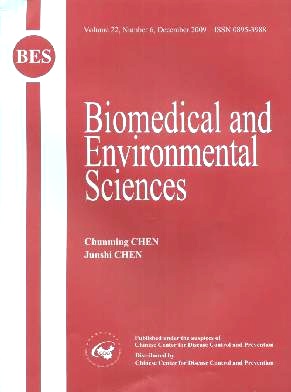Control of Iodine Deficiency Disorders Following 10-Year Universal Salt Iodization in Hebei Province of China
-
Key words:
- Iodine deficiency disorders (IDD) /
- Universal salt iodization (USI) /
- Assessment /
- Effectiveness
Abstract: Objective To evaluate the effectiveness of universal salt iodization (USI) for the control of IDD in Hebei province since it was implemented in 1995, identify the problems currently encountered in the implementation of USI and provide practical proposals for addressing these problems. Methods Probability proportionate to size sampling (PPS) was employed in the surveillance of IDD, for which a total of 1200 school children aged 8-10 years were randomly selected from 30 counties around the whole province during each IDD survey. The iodine content of salt was determined quantitatively with the titration method.The iodine content of urinary samples was measured by the method of ammonium persulfate oxidation. Results The coverage of iodized salt increased from 65.0% in 1995 to 98.0% in 1999, then decreased to 88.1% in 2005 which was below the national standard of 90%. The median urinary iodine of children aged 8-10 years varied between 160.1 μg/L and 307.4 μg/L,which was above the national standard. The proportion of urinary samples with iodine content above 300 μg/L was over 30% in 2005, implying exorbitant iodine nutrition among the children. The goiter rate (TGR) among children aged 8-10 years dropped from 11.8% in 1995 to 2.7% in 2005, indicating that the spread of endemic goiter was under control. Conclusion Preliminary elimination of IDD was achieved by USI in Hebei province. Nevertheless, some problems still existed in USI such as non-iodized salt competition, over iodization and un-standardized iodization. In order to address these problems, the management and supervision of salt market needs to be strengthened to prevent non-iedized salt from reaching households;updating equipment and modifying techniques are also necessary to ensure the quality of iodized salt; to clarify the causes of excessive urinary iodine content, the various sources of iodine from the diet need to be investigated in the future.
| Citation: | SHENG-MIN LV, LI-JUN XIE, RONG-HUA ZHOU, ZHEN-SHUI CHONG, LI-HUI JIA, JING MA, JUN ZHAO, DONG XU. Control of Iodine Deficiency Disorders Following 10-Year Universal Salt Iodization in Hebei Province of China[J]. Biomedical and Environmental Sciences, 2009, 22(6): 472-479. |







 Quick Links
Quick Links
 DownLoad:
DownLoad: